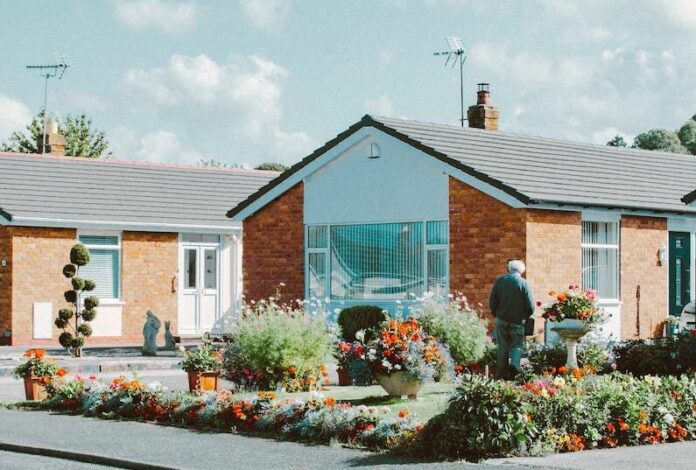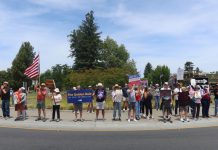At its Aug. 18 meeting, the Windsor Town Council heard a presentation by city staff regarding options for improving Windsor’s inclusionary housing ordinance, which has been criticized for hindering the development it had aimed to promote.
According to the staff report, the Town of Windsor first adopted an inclusionary housing ordinance in 2004, with the goal of increasing affordable housing. The original ordinance required that all projects of five or more units include a percentage of affordable units on-site, that percentage varying from 10% for very-low income units and 20% for moderate income units.
After zero affordable housing units were constructed, in 2009, the council amended the ordinance, allowing increased options for developers to reach the inclusionary requirement, such as permitting off-site building of the affordable units or paying an in-lieu fee rather than constructing the units themselves.
Kim Jordan of the town planning department presented the council with multiple options for further amending the ordinance to increase project feasibility. The options were developed based on a financial feasibility analysis conducted by BAE Urban Economics, Inc. to assess whether new developments would be able to meet the inclusionary requirements.
There were eight main policy options explored in the presentation, no one mutually exclusive of another, but rather a multitude of options that could be implemented piecemeal or wholesale.
One of the primary options discussed was creating a cost parity between in-lieu fees and the percentage of on-site affordable housing units required. Establishing cost parity would mean that the relative costs between developers choosing to meet the affordable unit requirement through actual on-site construction and those choosing to pay an in-lieu fee would be equitable.
“For cost parity, we really need to increase the in-lieu fee, which could make some projects even more unfeasible than they already are,” Jordan said. “Or the town could consider reducing the percentage of on-site affordable units that are required for market rate housing projects.”
Councilmember Esther Lemus pointed out that Windsor’s in-lieu fees are some of the lowest in the county.
The low in-lieu fee means developers will likely continue to select that option rather than build affordable units. With a low in-lieu fee, the town would receive funding that was less in value than the construction of units, and then still have to find developers to build the affordable units with that funding.
Other options explored included: allowing developers to build affordable units that are smaller in size, not just lower in price; allowing higher density bonuses (so that developers could build more units per acre if they include affordable units) or other incentives; and creating a flat in-lieu fee based on square footage.
The town could also increase development by removing arbitrary aspects of the application process, such as receiving special concessions and incentives at the discretion of Town Manager Ken MacNab.
MacNab was opposed to increasing the in-lieu fee to increase development, as he said fees are increasing the cost of development, which Windsor must increase in order to meet its Regional Housing Needs Allocation (RHNA) numbers. Municipalities like Windsor must build a certain number of housing units at various income levels during each eight-year RHNA cycle in order to receive state funding.
“Right now the cost of development, all inclusive including the in-lieu fee, is really creating an issue with most projects being built. The whole idea of this presentation was to give (council) options other than increasing the fees. I’m encouraged to hear some council members talk about even eliminating fees and looking at other requirements to get the production of affordable units — maybe in smaller numbers than, but numbers,” MacNab said.
Windsor will be required to produce 994 units over the next eight-year cycle, beginning in 2023 — a 126% increase over requirements of the last cycle.
During public comments, developers spoke up against the risk and cost of the inclusionary housing ordinance and the frequent changes made to it since 2004. One developer said that prior to the 2004 ordinance, Windsor had been approving applications for hundreds of units per year, and since 2009 has only averaged 13 per year.
Councilmember Debora Fudge said the decrease in development since 2009 was due to the recession and has continued during the past half-decade of heavy wildfire seasons, which led to prohibitively high construction costs.
Jordan said since the council members didn’t outright oppose any options, the next step would be for staff to engage with developers to see what would be feasible for them.
Since 2009, the town has collected $1.7 million from the in-lieu fee, which most developers have chosen as a means of satisfying the ordinance’s requirements, according to the staff report. Another $2 million in fees is expected when currently approved projects go to construction.
According to the staff report, $1.6 million of received in-lieu fees have gone to help fund three affordable housing projects: the Windsor Veterans Village, a 60-unit rental housing project for very-low- and low-income households projected to be occupied at the end of this month; Heritage Park, a 31-unit rental housing project affordable to very-low- and low-income households and approved by the planning commission July 2020 (currently delayed as the developer attempts to secure more public funding); and Duncan Village, a 16-unit for-sale project with a mix of low- and very-low-income homes, to be developed at first by Habitat for Humanity and now potentially by Burbank Housing.









